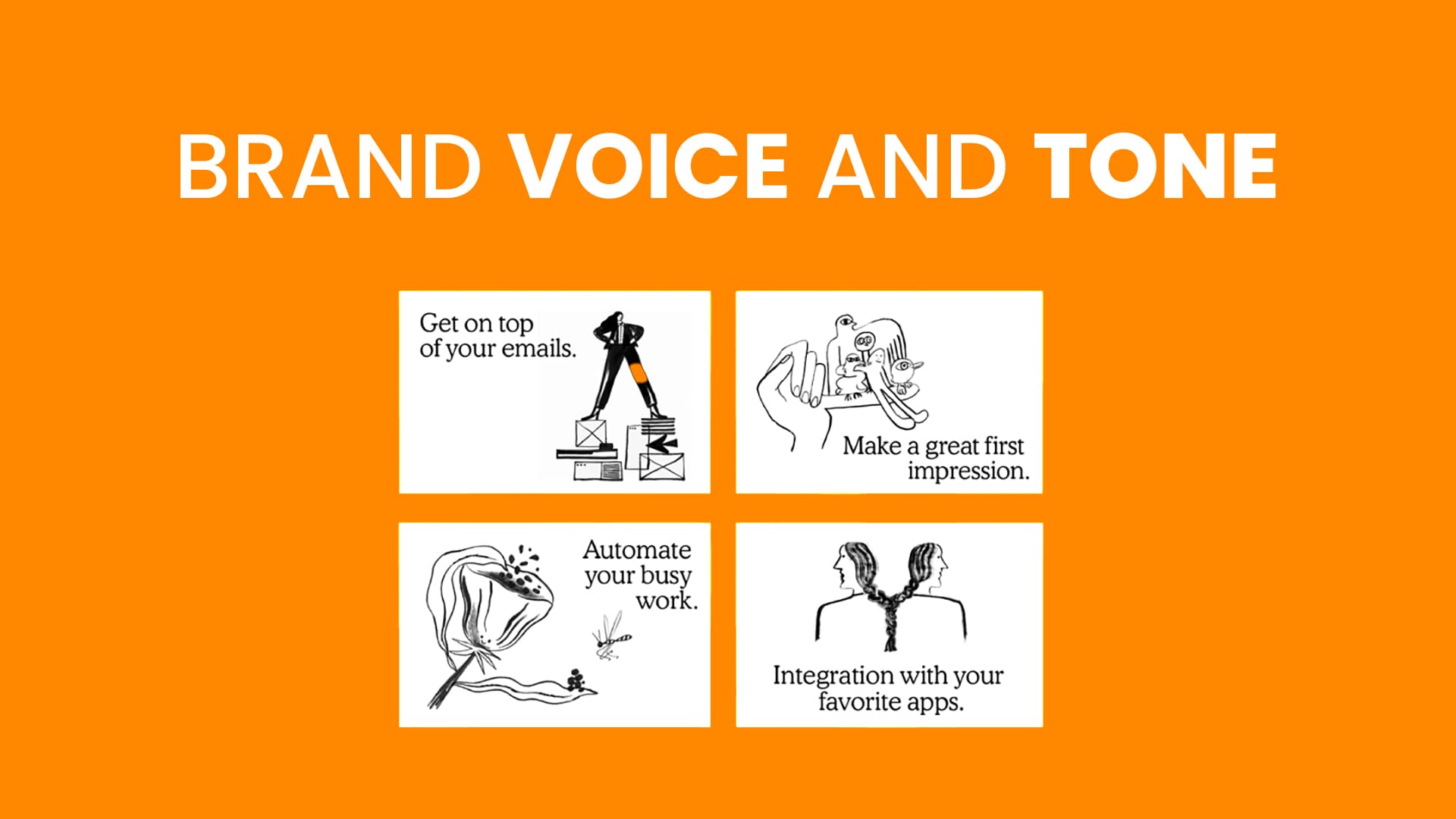
In the wild world of logo design, a brand’s voice and tone can make all the difference between a memorable masterpiece and a forgettable flop. It’s not just about slapping a pretty picture on a page; it’s about creating a personality that speaks volumes in a single glance. So buckle up, logo lovers, as we journey through the twisted, tangled web of crafting brand identity with a sprinkle of sass and a dash of dazzle. Let’s dive in and discover the magic of voice and tone in logo design – because who said branding couldn’t be a party
Establishing Brand Psychology through Voice and Tone
When it comes to , it’s important to remember that your brand is like a person. And just like any person, your brand needs to have its own unique personality traits and quirks.
One way to make sure that your brand has a consistent voice and tone is to create a style guide. This guide should outline things like your brand’s values, mission, and personality traits. Think of it as your brand’s handbook on how to act and speak in different situations.
Another important aspect of brand psychology is understanding your audience. You need to know who your target demographic is and what resonates with them. This will help you tailor your voice and tone to better connect with your audience on a deeper level.
Remember, the key to is consistency. You want your audience to be able to recognize your brand just by reading a few words. So, stay true to your brand’s personality and make sure it shines through in everything you do!

The Importance of Consistent Messaging in Logo Design
Have you ever seen a logo that left you scratching your head? Maybe it had a mix of colors that didn’t seem to go together or used a hodgepodge of fonts that clashed with each other. This confusion could have been avoided with consistent messaging in logo design.
Consistency is key when it comes to logos. A logo is like your brand’s signature - it should be instantly recognizable and convey your brand’s values and personality. If you’re sending mixed messages with your logo design, you’re setting yourself up for a branding disaster. Imagine if Nike suddenly started using pastel colors and cutesy fonts in their logo – it just wouldn’t make sense!
By keeping your messaging consistent in your logo design, you’re ensuring that you’re telling a cohesive story about your brand. Whether you’re using bold colors and clean lines to convey a sense of modernity or soft curves and pastel shades to give off a feeling of tranquility, your logo should speak the same language as the rest of your branding materials.
So remember, when it comes to logo design, consistency is key. Don’t let your logo leave people scratching their heads – make sure it’s sending a clear and consistent message about your brand!

Crafting a Memorable Identity through Voice and Tone
When it comes to crafting a memorable identity, your voice and tone are key players in the game. Just like in a rock band, each member needs to bring their own unique flair to the table in order to stand out. Your voice sets the stage for who you are as a brand, while your tone adds the necessary attitude and personality to make you unforgettable.
Think of your voice as the lead singer of the band – it should be strong, confident, and captivating. Whether you’re belting out power ballads or delivering smooth jazz vibes, your voice sets the tone for how your audience perceives you. Are you a rockstar breaking all the rules, or a crooner serenading your customers with sweet melodies?
Now, let’s talk about tone. Your tone is like the backing vocals in a harmony – it adds depth and dimension to your overall sound. Are you a sassy diva throwing shade left and right, or a laid-back surfer dude catching waves of positivity? Your tone should complement your voice and help to reinforce your brand identity.
So, as you embark on the journey of crafting a memorable identity, remember to fine-tune your voice and tone like a skilled musician. Play around with different styles, experiment with new sounds, and above all, have fun with it. After all, the best bands are the ones that aren’t afraid to push boundaries and make some noise. Rock on!

Using Emotional Appeal to Enhance Brand Recognition
Branding is more than just a logo or a catchy slogan, it’s about creating an emotional connection with your audience. By tapping into the power of emotions, you can enhance your brand recognition and leave a lasting impression on your customers.
So how can you use emotional appeal to take your brand to the next level?
- Showcase real customer testimonials and success stories to evoke feelings of trust and credibility. Nothing tugs at the heartstrings quite like a satisfied customer singing your praises.
- Create compelling storytelling content that makes your audience feel something. Whether it’s joy, nostalgia, or even a good old-fashioned tearjerker, a good story can strengthen the bond between your brand and your customers.
- Utilize relatable and authentic imagery that resonates with your target audience. People want to see themselves reflected in your brand, so make sure your visuals are relatable and speak to their emotions.
Remember, emotions are a powerful tool in marketing, so don’t be afraid to get a little sentimental in your branding efforts. After all, a brand that can make customers laugh, cry, or feel warm and fuzzy inside is a brand that will leave a lasting impression.

The Role of Voice and Tone in Building Trust with Customers
When it comes to building trust with customers, your voice and tone are like the secret ingredients in a recipe – they can make or break the dish! Think of your voice as the main flavor, setting the overall tone for the interaction. Are you going for a spicy, sassy tone to grab attention, or a smooth, comforting tone to reassure your customers?
Here are a few ways to use voice and tone to win over your customers:
- Be authentic: Customers can smell a fake persona from a mile away. Be genuine and honest in your communication to build trust.
- Inject humor: Laughter is the best medicine, even in customer service. Adding a touch of humor to your tone can make customers feel at ease and more connected to your brand.
- Show empathy: Customers want to feel like they’re being heard and understood. Use a compassionate tone to show that you care about their concerns and experiences.
- Keep it simple: A cluttered logo is like wearing a three-piece suit to the beach – it just doesn’t work. Stick to a clean, minimal design that conveys your brand’s message without overwhelming your audience.
- Stay on brand: Your logo should reflect your brand’s identity, values, and personality. If you’re a fun and quirky brand, your logo should be too. If you’re a serious and professional brand, your logo should reflect that.
So next time you’re crafting an email, recording a voicemail greeting, or chatting with a customer, think about the role your voice and tone are playing in building trust. With the right ingredients, you’ll have customers coming back for seconds!
Delivering a Cohesive Brand Experience through Logo Design
When it comes to logo design, there’s more to it than just picking a fancy graphic or snazzy font. Your logo is the face of your brand, the first thing customers see and the last thing they remember. So, how do you ensure that your logo delivers a cohesive brand experience? Here are a few tips:
Remember, consistency is key when it comes to branding. Your logo should be used across all touchpoints – from your website to your social media profiles to your business cards. This not only reinforces your brand identity but also helps build trust and recognition with your audience. So, the next time you’re designing a logo, think beyond just aesthetics and focus on delivering a cohesive brand experience that resonates with your target audience.
FAQs
What role does voice and tone play in logo design?
Think of voice as the personality of your brand and tone as the mood it’s in. Just like your crazy uncle at Thanksgiving dinner sets a certain tone (usually chaotic), your brand’s voice and tone in logo design sets the stage for how your audience perceives you.
Can you give an example of how voice and tone can be reflected in a logo?
Imagine a logo for a children’s toy company. If the voice is fun and playful, the tone might be energetic and silly. This could be reflected in bright colors, whimsical fonts, and maybe even a cartoonish mascot. On the other hand, if the voice is more sophisticated and educational, the tone might be calm and informative, leading to a logo with clean lines, muted colors, and a simpler design.
How can a business ensure their logo design accurately reflects their brand’s voice and tone?
It’s all about knowing yourself. Take a good hard look in the mirror and ask yourself, “Who am I? What do I stand for? What is my favorite flavor of ice cream?” Once you have a clear understanding of your brand’s personality, you can work with a designer to translate that into a visual representation that screams, “I’m here, I’m fabulous, and I have ice cream!”
What are some common mistakes businesses make when it comes to incorporating voice and tone into their logo design?
One big no-no is trying to be something you’re not. If your brand is all about serious business but you try to slap a bright pink unicorn on your logo because “unicorns are in right now,” you’re going to confuse your audience faster than a sheep trying to do math. Stay true to who you are, even if that means passing up on the unicorn trend.
Crafting Your Brand Identity: Putting the “Ha Ha” in Logo Design
Congratulations, you’ve made it to the end of our journey into the wild world of brand identity! Remember, when it comes to your logo, voice and tone are crucial in conveying your brand’s personality. So go forth, embrace your inner comedian (or whatever your brand’s vibe may be), and craft a logo that will make both you and your customers chuckle with delight. Happy designing!










